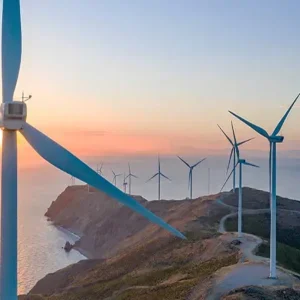Currently, nuclear power plants are operated in 31 countries and a significant number of them are located in Europe, Northern America, East Asia and South Asia. While some countries, including Australia, Denmark and Malaysia have no nuclear power plants, other nations such as China, South Korea and India aim a multifold increase in their nuclear power generating capacity.
However, in recent years, many European nations have announced plans to shutdown nuclear power plants. Following the Fukushima Daiichi nuclear disaster in March 2011, Germany announced plans to shut all its nuclear reactors by 2022. At the time of the announcement, it received 23% of its power from its 17 nuclear reactors, nine of which were running at full capacity. In 2011, Italy had also voted in favour of a referendum to shun the restart the nuclear plants that were closed in 1980s.
Here is the list of top nuclear power producing countries:
US: With a capacity of 805 billion kWh in 2016, the US is the world's largest producer of nuclear power. It accounts for over 30% of worldwide nuclear power generation. As of October 2017, the country had 99 nuclear reactors in 30 states, which produced nearly 20% of the country’s total electrical output, according to World Nuclear Association (WNA). Two new nuclear reactors are expected to become operational after 2020. The country produces all its nuclear power from reactors built between 1967 and 1990. In April 2014, the US Energy Information Administration estimated that the country will lose 10,800 MWe of nuclear power generation capacity generation by 2020 due to a decline in natural gas prices and “stagnant growth” in electricity demand.

Image: Aerial view of the Palo Verde nuclear generating station in Arizona. Photo courtesy of Cuhlik/Wikipedia.
France: The European nation is the second largest producer of nuclear power in the world, with a capacity of 384 billion kWh in 2016, according to the International Atomic Energy Agency (IAEA). Operating 58 nuclear reactors, the country generated more than 72% of its electricity from nuclear power plants. However, in July 2017, French Environment Minister Nicolas Hulot in an interview with RTL radio station said that the country was planning to shut down up to 17 nuclear reactors in the next eight years to reduce the contribution of nuclear power in its energy mix.
China: With 37 nuclear power reactors in operation as of October 2017, China is the third largest producer of nuclear energy. Nuclear power capacity of China stood at 210.5 billion kWh in 2016, accounting for 3.6% of the country’s total electricity generation. A major boost to nuclear power expansion in China is from increasing air pollution from coal-fired power plants, according to WNA. China plans to increase its nuclear capacity by 70% to 58 GWe by 2020-21, with the addition of new reactors.

Image: CANDU Nuclear Power Plant at Zhejiang, China. Photo courtesy of Atomic Energy of Canada Limited/Wikipedia.
Russia: With a nuclear power generating capacity of 179.7 billion kWh in 2016, Russia occupies fourth spot in the list of top producers of nuclear power. As of 2016, Russia operated 36 nuclear power reactors, which produced 1.7.1% of the country’s total electricity generation. In 2006, the Federal Atomic Energy Agency (Rosatom) announced targets to increase nuclear power contribution to Russia’s energy mix to 23% by 2020 and 25% by 2030. The government had also announced plans to construct 11 new nuclear power reactors by 2030 – including two BN-1200 sodium-cooled fast neutron reactors, World Nuclear News reported.
South Korea: The East Asian country is the fifth largest producer of nuclear power globally, with a capacity of 154.3 kWh in 2016. Operating 25 nuclear reactors, the country generates more than 30% of the electricity from nuclear power plants. In April 2015, South Korea had signed a nuclear cooperation agreement with the US government to ensure a stable supply of fuel for its nuclear reactors. In October 2017, Yonhap News Agency reported that South Korea had decided to resume construction work on the two Shin Kori-5 and Shin Kori-6 nuclear reactors with a combined capacity of 1,400MW. As part of the election promises made by the country's President to phase out nuclear energy, construction on the two nuclear units was suspended in July.
Canada: Accounting for 15.6% of the total electricity generation in Canada, the country’s nuclear power capacity stood at 97.4 billion kWh in 2016. The country operates 19 nuclear power reactors. As of June 2017, the country produced nearly 16% of its total electricity generation from nuclear power plants. Canada uses indigenously designed pressurized heavy-water reactor (PHWR) namely the CANDU reactors. It exported CANDU reactors to India, Pakistan, Argentina, South Korea, Romania, and China. In October 2016, Ontario Power Generation (OPG) commenced the $12.8bn refurbishment work at the 3,500MW Darlington nuclear generating station located in Clarington, Canada. The upgrade project is expected to help extend the operational life of the reactors to up to 2055.

Image: The Bruce Nuclear Generating Station, the largest nuclear power facility in the world. Photo courtesy of Chuck Szmurlo/Wikipedia.
Ukraine: With a nuclear power generating of 81 billion kWh in 2016, Ukraine stands at seventh position in the list. Operating 15 reactors, the country produces more than half of its electricity from nuclear power plants. Russia provides a major part of the nuclear services and nuclear fuel needed by Ukraine. In 1990, the country halted the construction of the two nuclear reactors, which were planned to have a production capacity of 1000MW each, at the Khmelnytsky nuclear power plant. In September 2016, South Korea’s state-owned nuclear power company Korea Hydro & Nuclear Power (KHNP) and Ukraine's National Nuclear Energy Generating Company (NNEGC) Energoatom had signed a memorandum of understanding (MoU) for the completion of units 3 and 4.






